Royal Canin Cat Food Review
Contents of Article
Royal Canin was founded in France in 1967-68. The food was supposed to be different from other pet foods because its nutrition was based on science. The company has always emphasized research and development. It employs teams of researchers to work on pet food formulations for specific breeds, health issues, age groups, and exercise levels. Today Royal Canin is one of the many brands owned by Mars Petcare.
Who Manufactures Royal Canin?
Royal Canin manufactures their own pet foods. They have manufacturing facilities all over the world. All of their pet food distributed and sold in the United States is made in company-owned plants located in the United States and Canada. The U.S. headquarters for Royal Canin is in St. Charles, Missouri, with plants in Missouri and South Dakota. The worldwide headquarters for Royal Canin is in the south of France.
Royal Canin Cat Food Recalls 2023
- Royal Canin was affected by the melamine recall in 2007. However, we do not find any recalls for Royal Canin in the FDA database since that time.
Royal Canin Cat Food Coupons 2023
Overall Royal Canin Review
More than many pet food companies, Royal Canin is concerned with pet nutrition instead of particular ingredients. The company tends to look at the precise nutrients that an animal needs and how to provide them instead of trying to provide ingredients that could be fed to humans. Many cat lovers today will disagree with this approach to feeding a cat but Royal Canin produces good quality foods. You may not like the ingredients when you look at the label but the nutrients and percentages will always be correct.
People will point out that shoe leather and steak are both protein, and that is true. You can make chemical formulas look good but it doesn’t necessarily mean that you should feed something to your cat. It’s a good idea to look at foods on a one by one basis and consider your individual cat’s needs.
Royal Canin also has a veterinary pet food division that makes many cat foods (and dog foods) for pets that have special dietary needs – especially animals that have serious health problems. Some of these foods literally save lives. Don’t read the ingredient list. Just be thankful that the food helps your cat.
They make foods for cats with sensitive stomachs, skin and coat problems, cats that are overweight, cats with teeth and dental problems, cats that need help with hairballs, cats that are picky eaters, and food for cats that are pregnant or nursing.
Royal Canin’s veterinary diets that require a prescription include Urinary SO, Renal LP, Gastrointestinal Fiber Response, Selected Protein Adult PR, PV, PD; Hypoallergenic Hydrolyzed Protein HP, GlycoBalance DS, Calm Formula, Gastrointestinal Moderate Calorie, Gastrointestinal High Energy HE, Dental, Satiety Support, Recovery RS, Calorie Control, Calorie Control High Fiber, Development Kitten, Weight Control, Senior Consult, Mature Consult, Mature Consult Moderate Calorie, Adult, Renal Support D, S, A, E, T, and F.
Royal Canin also makes breed-specific foods. They make foods for Maine Coons, Persians, Ragdolls, and Siamese at this time – though this list is likely to expand. (They make lots of different breed-specific foods for dogs.) There is some debate about whether breed-specific foods are really necessary for cats, so use your own judgment if you are considering a breed-specific cat food. Or, try one and see if you like the results.
And, of course, they make cat foods based on a cat’s age and lifestyle (indoor or outdoor, or both). Royal Canin even has a new cat food designed for spayed/neutered cats.
We know several veterinarians who feed Royal Canin to their cats and recommend it, and they are not people who sell it or get a kickback from the company.
Individual Recipe Review (Dry) Royal Canin Feline Health Nutrition Spayed/Neutered Appetite Control
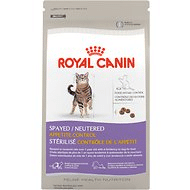
If you are completely opposed to the use of grains – especially corn – in cat food, then you are going to hate this food. It’s just loaded with grains, including corn and wheat. But we already mentioned that Royal Canin looks at nutrients and not ingredients.
Royal Canin has this to say about grains:
Many people will tell you that corn causes allergies and has no nutritional value. And while a food reaction may affect some dogs with rare, documented food allergies, there is no evidence to support claims that grains in general cause health problems.
When processed properly, grains like corn can be a healthy part of any cat or dog’s diet. In fact, properly processed corn contains far more nutrients than ingredients commonly used as replacements for it in grain-free diets.
Royal Canin grinds the corn very finely before it’s added to any of our formulas. This makes it a very effective and digestible carbohydrate source.
We also recently added corn gluten meal and wheat gluten to some of our feline and canine formulas. Both are great sources of highly digestible protein, and wheat gluten contains amino acids that support gastrointestinal health. Both corn and wheat gluten are good complements to chicken meal.
Everything they say here is correct. On the other hand, we usually like to see cats get more protein from animal protein sources than from plant sources. Cats can digest some carbs but they don’t digest them as well as dogs do – and many dog owners today prefer to keep carbs low. This is probably a case where it depends on how much grain is used and how it’s combined with other ingredients. The most common food allergens for cats are beef, milk products, and seafood. Grains like corn and wheat, along with soy, are less likely to cause an allergic reaction.
The first five ingredients in this food are chicken meal, corn, corn gluten meal, wheat, and powdered cellulose. Most people would agree that chicken meal is a good ingredient in a dry cat food. Chicken has 60-80 percent protein and 20-40 percent fat. It’s a good source of Vitamin B6 and Phosphorus, and a very good source of Niacin and Selenium.
Chicken meal has had most of the moisture removed. It is a condensed source of chicken protein and nutrients.
Corn is mostly carbs. It is 82 percent carbs, 7 percent protein, and 11 percent fat.
Corn gluten meal, the third ingredient in the food, is a by-product of making corn starch and corn syrup. It’s a fine, yellow granular powder. It is up to 60 percent protein – making it a favorite with all kinds of animal feed producers. It adds lots of plant protein to foods at a much lower cost than using meat protein. It’s not a harmful ingredient but many pet owners prefer a meat-based protein. The fact is, when pet food companies stop using grains, including corn gluten meal, they often use peas/lentils/legumes instead. They don’t add more meat protein to their pet foods. So pet lovers are left to choose between “grain free” foods that are full of peas/lentils/legumes – which have their own issues, or feed foods that contain some grains if they feed a dry food.
The fourth ingredient in the food is wheat. This probably refers to wheat flour. Wheat flour is about 80 percent carbohydrates, 15 percent protein, and 5 percent fat. It’s a good source of Dietary Fiber, and a very good source of Manganese and Selenium. Wheat flour also helps make the pet food mixture into a dough so it can be cooked and extruded. The food also contains wheat gluten later in the list which would be higher in protein.
The fifth ingredient in the food is powdered cellulose. In pet food terms, cellulose comes from plant cells. It’s a structural carbohydrate found in plants and trees. It’s often used in pet weight control diets, formulas for hairball control, and diabetic diets. On the down side, it’s a filler and it’s hard to digest – because it is basically wood pulp. Just to be clear, cellulose is added to pet food because it is hard to digest (insoluble fiber) and it adds practically no calories (or anything else) to the food. It helps the pet feel full with a lower calorie diet. But there are concerns if too much cellulose is added to the diet. “When added to the diet at high levels, this amount of fiber can negatively affect the digestibility of other nutrients like protein and minerals (Muir et al., 1996; Kienzle et al., 2001b). But, this can also be exploited in the case of diabetes where cellulose has been shown to aid in the management of glucose in the diabetic dog (Nelson et al., 1991) and cat (Nelson et al., 1998; 2000) when added to the diet in sufficient quantities.” Aldrich, PetFoodIndustry.com, 2007. The powdered cellulose would be added to this food because it is supposed to be an appetite-control diet for spayed/neutered cats.
Other ingredients of interest in the food include: “natural flavors” which is often a code term for a form of monosodium glutamate (MSG) – a flavor enhancer. Dried beet pulp is not a filler ingredient, though it is often misunderstood online. It is simply a probiotic and insoluble fiber. Your cat’s body needs pre- and probiotics as well as soluble and insoluble fibers for good digestion.
We had trouble tracking down grain distillers dried yeast. Brewers dried yeast has been a common ingredient in pet food but today many pet food and livestock feed companies are getting corn-based distillers grains from the ethanol industry. A product called dried distillers grains with solubles (DDGS traded as a commodity) is produced by adding yeast and allowing it the mixture to ferment for a few days. The solids that are left over after drying are the distillers grains. Maybe that is the source of this ingredient?
The food also contains psyllium seed husk, a soluble plant fiber that absorbs water and becomes like mucilage in the intestines. Note that it’s always important for cats to have plenty of water in their diet. This is especially true when they eat a dry kibble as their main food. A food that contains psyllium seek husk draws water into the gastrointestinal tract – that makes it even more important for your cat to have lots of water in their diet.
The food also contains fructooligosaccharides which are a natural alternative sweetener and prebiotic. They have fewer calories than other sugars and contribute dietary fiber to the diet.
Otherwise, the food uses some chelated or proteinated minerals which make it easier for your cat to absorb them. It also includes taurine, natural preservatives, and some other standard additives.
Calorie Content: This diet contains 3295 kilocalories of metabolizable energy (ME) per kilogram or 281 kilocalories ME per cup on an as fed basis (calculated).
Guaranteed Analysis
| Crude Protein (% min.) | 32.0 |
| Crude Fat (% min.) | 10.0 |
| Crude Fiber (% max.) | 11.5 |
| Moisture (% max.) | 8.0 |
FELINE HEALTH NUTRITION™ SPAYED/NEUTERED APPETITE CONTROL is formulated to meet the nutritional levels established by the AAFCO (Association of American Feed Control Officials) Cat Food Nutrient Profiles for maintenance.
Dry Matter Basis: This food has an estimated 34.8 percent protein, 10.9 percent fat, 12.5 percent fiber, and 34.2 percent carbohydrates. (AAFCO recommendations for protein for adult cats are a minimum of 26 percent and 30 percent for growing kittens; and 9 percent fat for both adult cats and growing kittens.)
Final Thoughts
This food is low in fat and very high in fiber but that’s not entirely unexpected in a cat food that is aimed at appetite control. Some people have suggested that pet foods that are very low in fat can leave a pet feeling hungry, which leads to begging – and feeding between meals – which defeats the purpose of feeding a food to control weight. However, all of the fiber in this food may help your cat feel full.
We would strongly recommend that you make sure your cat drinks plenty of water if you feed this dry cat food.
Yes, we said that Royal Canin focuses on the nutrients and the science instead of human grade ingredients. Yes, we know very knowledgeable people who feed their cats Royal Canin. But we can’t help raising an eyebrow at a few ingredients in this food. The bottomline is: this food may be scientifically, chemically balanced, but it’s not what we would choose to feed our cats.
We do have a caveat. If you have a cat with a special need, especially a health problem of some kind, we recommend Royal Canin’s veterinary formulas very highly.

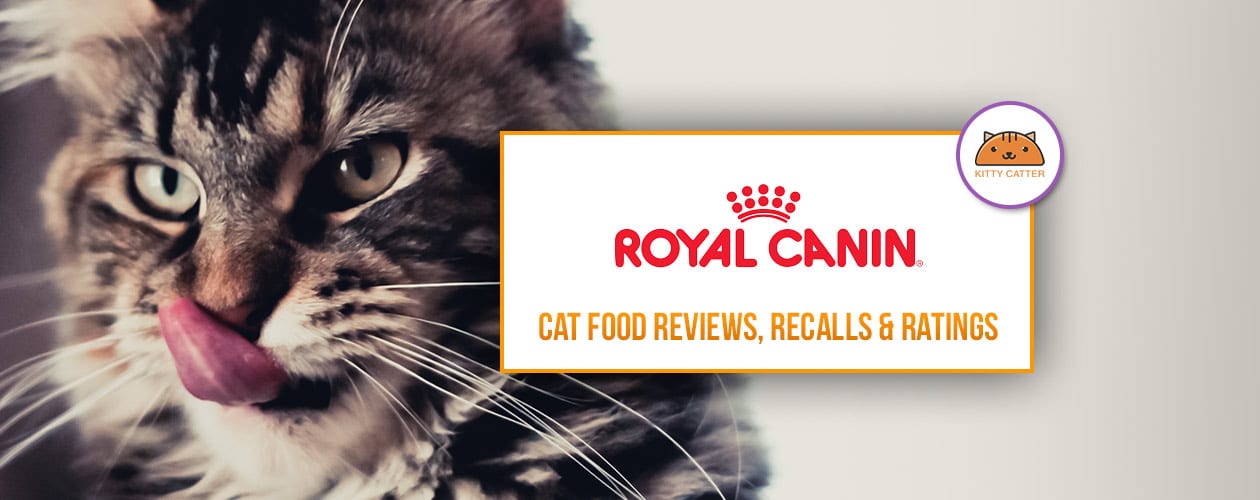
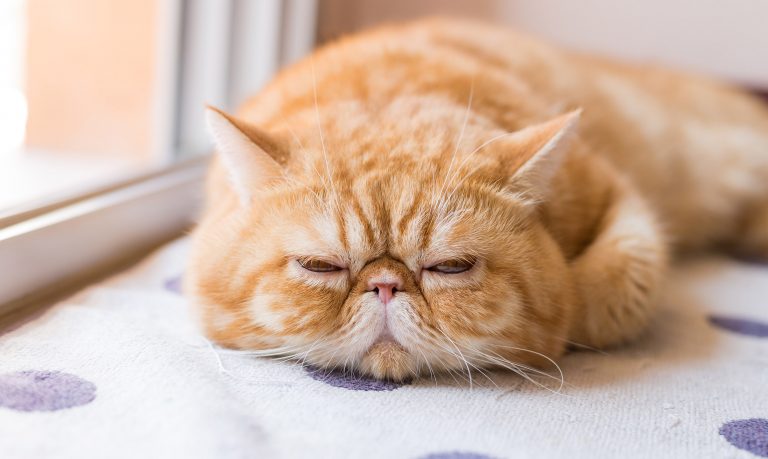
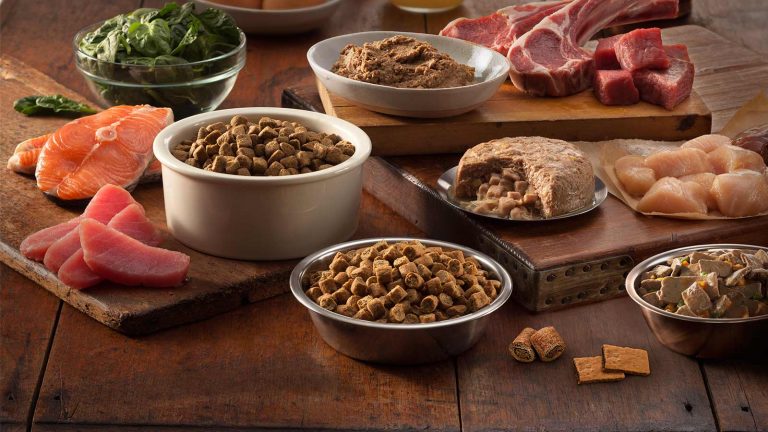
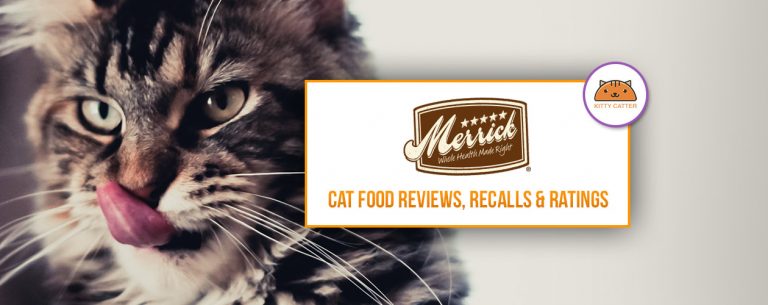
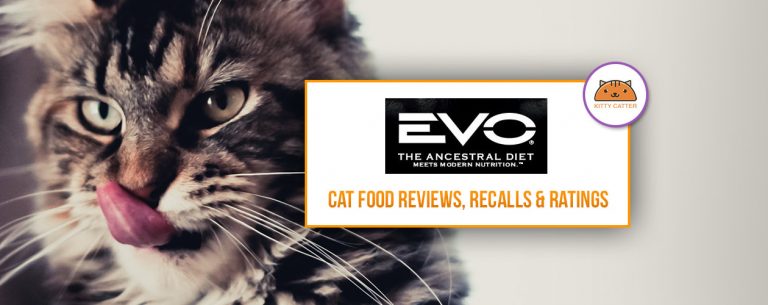
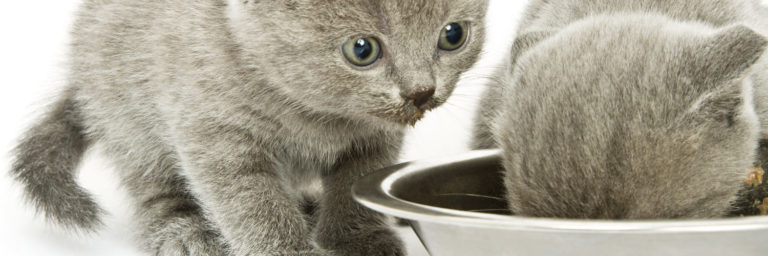
Hi, I’m Shilpa. I have Persian cat from 2 years. In the beginning, I feed different types of food brands for my cat. But my cat became very unhealthy. One of my friends suggested me marshallspetzone.com. They diagnosed my cat very well and suggested me Royal Canin for my cat. Now my cat is very healthy. Royal Canin is expensive but I bought at very low cost from them with high discounts